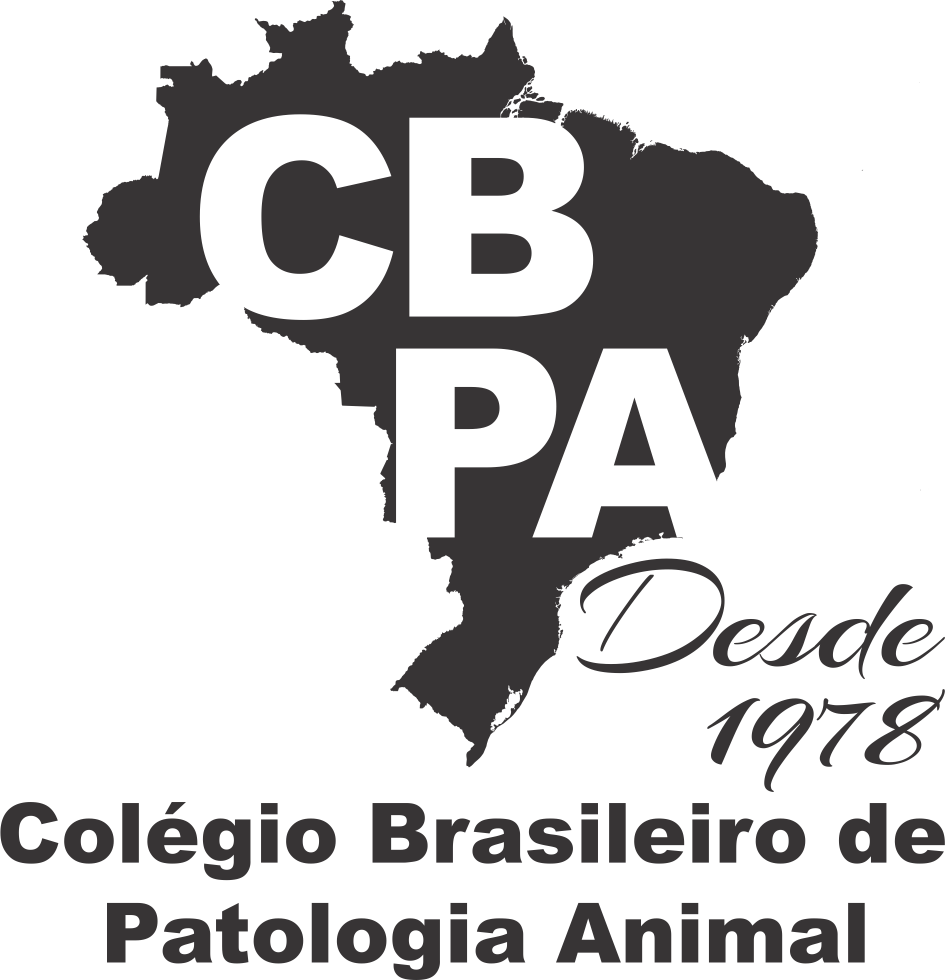Resultado da pesquisa (4)
Termo utilizado na pesquisa reproductive losses
#1 - Causes of abortion, stillbirth, and perinatal mortality in horses
Abstract in English:
Causes of abortion, stillbirth, and perinatal mortality in horses were investigated in the Department of Veterinary Pathology of the Federal University of Rio Grande do Sul (SPV-UFRGS) from 2000 to 2015. In this period, 107 cases were analyzed using macroscopic, microscopic, and complementary tests. Of these, 77 were aborted fetuses, 16 were stillbirths, and 14 were perinatal deaths. Conclusive diagnosis was established in 42.8% of the fetuses analyzed, with 28.6% classified as infectious origin, 9.1% as non-infectious, and 5.1% as other. Bacterial infections, especially those related to Streptococcus spp. were the most frequently observed. In stillborn foals, diagnosis was established in 62.5% of cases, and 50% of these were related to non-infectious causes, such as dystocia and birth traumas. As for perinatal mortality, a conclusive diagnosis was reached in 78.57% of cases, and infectious causes associated with bacterial infections accounted for 64.1% of these diagnoses.
Abstract in Portuguese:
Causas de aborto, natimortalidade e mortalidade perinatal em equinos foram investigadas no Setor de Patologia Veterinária da Universidade Federal do Rio Grande do Sul (SPV-UFRGS) durante o período de 2000 a 2015. Nesse período, foram analisados 107 casos através de exames macroscópico, microscópico e exames complementares, desses 77 correspondiam a fetos abortados, 16 natimortos e 14 mortes perinatais. Diagnóstico conclusivo foi estabelecido em 42,8% dos fetos analisados e classificados como origem infecciosa em 28,6% dos casos, não infecciosa com 9,1% e outros com 5,1% dos casos. As infecções bacterianas, em especial as relacionadas a Streptococcus spp. foram as mais frequentemente observadas. Em potros natimortos, diagnostico foi estabelecido em 62,5% dos casos, e destes, 50% foram relacionados a causas não infecciosas, como distocia e traumas durante o parto. Quanto a mortalidade perinatal, em 78,57% dos casos houve um diagnostico conclusivo, e as causas infecciosas associadas a infecções bacterianas corresponderam a 64,1% desses diagnósticos.
#2 - Embryonic loss, abortion, and malformations in ewes caused by the ingestion of hay leaves of Cenostigma pyramidale
Abstract in English:
Determining if reproductive failures in ewes at the semiarid region in the state of Bahia are related to the consumption of the species Cenostigma pyramidale (Tul.) Gagnon & G.P. Lewis, and this study was developed using pregnant ewes divided into six groups: G1, G2, G3, G4 with six animals each, G5 and G6 with ten animals. Each group received fence leaves in the proportion of 1%, 2%, 0.5%, and 0.25% of live weight (LW) respectively; G5 and G6, with ten animals each, receiving 0.25% and 0.5% of the LW, respectively, and the Control Group, comprising 16 ewes, were grass feeding (Cynodon dactylon). Ewes from G1 to G4 were the same, except for two, and started ingestion of the plant four days after ending of natural mating on the 80th day of gestation, while those regarding from G5 to G6 groups started ingestion on the 26th day of gestation ending on the 98 day. The ultrasonographic test was performed weekly. In G1 ewes (1%), there was an embryonic loss on the 32nd and 39th days of gestation and abortion on the 46th day. In G2 (2%), the embryo loss was earlier (on the 26th day of gestation), and abortion on the 46th day of gestation. In G3 group (0.5%), there was an embryonic loss around the 40th day of gestation. In G4 group (0.25%), it was observed the occurrence of one death lamb with bone malformations. In G6 (0.5%), abortion occurred later (108 days), followed by retained placenta. This was also verified in G5 group (0.25%). The presence of fetal malformation was found in death lambs born in G4 group, born alive from G5 and G6 groups, and one aborted from G6. In G5 and G6 groups, there were also genetic alterations on surviving lambs. In addition to these results, recurrent estrus was observed without gestation in G1, G2, G3, and G4 ewes. From the Control Group, 13 normal lambs were born without genetic alterations; furthermore, concerning a quadruple birth, three lambs were born dead. The results infer that species of C. pyramidale in low doses causes reproductive losses in pregnant ewes, therefore it is not recommended for sheep diet over the first 60 days of gestation.
Abstract in Portuguese:
Para determinar se falhas reprodutivas em ovelhas na região semiárida da Bahia estão relacionadas ao consumo de Cenostigma pyramidale (Tul.) Gagnon & G.P. Lewis, foi realizado um estudo utilizando-se ovelhas prenhes divididas em seis grupos e dois Grupos Controle. Os grupos G1, G2, G3 e G4 com seis animais cada. Cada grupo recebeu folhas fenadas na proporção de 1%, 2%, 0,5% e 0,25% do peso vivo (PV) respectivamente; G5 e G6, com 10 animais cada, que receberam 0,25% e 0,5% do PV respectivamente. Os Grupos Controle foram alimentados com ração e capim (Cynodon dactylon). Ovelhas dos grupos 1 a 4 iniciaram ingestão da planta quatro dias após monta natural com término aos 80 dias de gestação, enquanto as dos grupos 5 a 6 iniciaram ingestão no 26º dia de gestação com término aos 98 dias. Avaliação ultrassonográfica foi realizada semanalmente. Nos animais do G1 (1%), verificou-se perda embrionária aos 32 e 39 dias de gestação, e aborto aos 46 dias. Nos do G2 (2%) a perda embrionária foi mais precoce (26 dias), e aborto aos 46 dias. No G3 (0,5%), houve perda embrionária em torno dos 40 dias. No G4 (0,25%), verificou-se ocorrência de natimorto com malformações aos 150 dias de gestação. No G6 (0,5%) o aborto ocorreu mais tardiamente (108 dias), seguido de retenção de placenta. Essa ocorrência também foi verificada no G5 (0,25%). A presença de malformação fetal foi encontrada em fetos natimorto do G4, nascidos vivos do G5 e G6, e um abortado do G6. No G5 e G6 também foram observadas alterações de aprumos em cordeiros sobreviventes. Do Grupo Controle nasceram 13 borregos normais, porém uma ovelha apresentou gestação quádrupla com três natimortos. Os resultados inferem que C. pyramidale fenada em baixas doses causa perdas reprodutivas em ovelhas gestantes, não sendo por isso recomendada para a dieta de ovelhas durante os primeiros 60 dias de gestação.
#3 - Spontaneous abortion, congenital malformation and reproductive losses in goats due to poisoning by the leaves of Poincianella pyramidalis (syn. Caesalpinia pyramidalis)
Abstract in English:
The aim of this study was to investigate the effects of the leaves of the tree Poincianella pyramidalis (Tul.) L.P. Queiroz as a spontaneous cause of abortion, malformation and reproductive failure in goat herds in the Brazilian semiarid region. Epidemiological investigations, clinical evaluation of goats affected by malformation and necropsy of aborted fetuses was carried out on 12 farms located in the municipalities of Gurjão and Soledade, state of Paraíba, and on a farm located at the municipality of Pau dos Ferros, state of Rio Grande do Norte. The study considered only the farms where occurred predominantly P. pyramidalis among teratogenic plants. On the farm located in the municipality of Pau dos Ferros the occurrence of frequent abortion and birth of malformed goats, affecting 90% of pregnant goats, was observed. On the 12 farms belonging to the municipalities of Gurjão and Soledade, spontaneous cases of embryonic mortality, abortion and malformation occurred in 257 goats (41.1% of goats). Arthrogryposis was the main congenital malformation observed. Necropsy and histopathological exams of four fetuses and their placentas did not detect the presence of infectious agents. The cases of embryonic mortality, abortion and malformation were predominantly concentrated during the seasons of the year when pasture was scarce, but P. pyramidalis was available, due to the occurrence of pre-seasonal rains, which did not allow the pasture to germinate but P. pyramidalis to regrowth. The findings of this study confirm that this plant significantly interferes in the reproductive efficiency of semi-arid goat herds.
Abstract in Portuguese:
O objetivo deste estudo foi investigar os efeitos de folhas da espécie arbórea Poincianella pyramidalis (Tul.) L.P. Queiroz como causa espontânea de abortos, malformações e falhas reprodutivas em rebanhos caprinos no semiárido brasileiro. Foram realizadas investigações epidemiológicas, avaliações clínicas de caprinos acometidos por malformações e necropsias de fetos abortados em 12 propriedades localizadas nos municípios de Gurjão e Soledade, na Paraíba, e no município de Pau dos Ferros, Rio Grande do Norte. O estudo considerou apenas as propriedades que tinham basicamente a presença de P. pyramidalis entre as plantas teratogênicas. Na propriedade localizada no município de Pau dos Ferros foi verificada a ocorrência de grande número de abortos e o nascimento de cabritos malformados, acometendo 90% das cabras gestantes. Nas 12 propriedades pertencentes aos municípios de Gurjão e Soledade na Paraíba os casos espontâneos de mortalidade embrionária, abortos e malformações acometeram 257 cabras (41,1% das cabras dos rebanhos). A artrogripose foi a principal malformação congênita observada. Exames de necropsia e histopatológico de quatro fetos acompanhados das placentas não constataram a presença de agentes infecciosos. Os casos de perda embrionária, abortos e malformações foram concentrados predominantemente nas épocas do ano em que a pastagem estava escassa, mas havia disponibilidade de P. pyramidalis nas propriedades, devido à ocorrência das chuvas da pré-estação, que não permitiu a germinação de pasto, mas a rebrotação de P. pyramidalis. Os achados desse estudo comprovam que esta planta interfere consideravelmente na eficiência reprodutiva dos rebanhos caprinos do Semiárido.
#4 - Perdas reprodutivas associadas com infecção por Toxoplasma gondii em caprinos no sul do Brasil, p.167-171
Abstract in English:
ABSTRACT.- Pescador C.A., Oliveira E.C., Pedroso P.M.O., Bandarra P.M., Okuda L.H., Corbellini L.G. & Driemeier D. 2007. [Reproductive losses linked to Toxoplasma gondii infection in goats in southern Brazil.] Perdas reprodutivas associadas com infecção por Toxoplasma gondii em caprinos no sul do Brasil. Pesquisa Veterinária Brasileira 27(4):167-171. Departamento de Patologia Clínica Veterinária, Faculdade de Veterinária, Universidade Federal do Rio Grande do Sul, Av. Bento Gonçalves 9090, Porto Alegre, RS 91540-000, Brazil. E-mail: davetpat@ufrgs.br
Toxoplasma gondii was implicated with reproductive losses in a goat herd in Rio Grande do Sul, Brazil. Gross changes were present in 2 out of 6 fetuses/offsprings submitted for diagnosis and included enlarged, pale mesenteric lymph nodes, and edematous, mottled red and tan lungs. Microscopic changes were observed in most fetuses and were especially characterized by lymphoplasmacytic infiltration in the brain and lungs. Other histological changes included lymphoplasmacytic interstitial nephritis, necrotizing lymphadenitis and periportal lympho-plasmacytic cell infiltrates. While bacteriological and direct immunofluorescent antibody tests for Leptospira sp. were negative in samples from all cases, immunohistochemical and PCR procedures for Toxoplasma gondii reacted positively in most of them. Antibody titles against T. gondii varying from 1:512 to 1:2048 were detected in serum samples from the mother goats of these aborted (1), stillborn (3) or dead newborn (2) kids. This paper describes the clinical, pathological, serological, molecular and immunohistochemical findings of a Toxoplasma gondii-infected goat flock.
Abstract in Portuguese:
ABSTRACT.- Pescador C.A., Oliveira E.C., Pedroso P.M.O., Bandarra P.M., Okuda L.H., Corbellini L.G. & Driemeier D. 2007. [Reproductive losses linked to Toxoplasma gondii infection in goats in southern Brazil.] Perdas reprodutivas associadas com infecção por Toxoplasma gondii em caprinos no sul do Brasil. Pesquisa Veterinária Brasileira 27(4):167-171. Departamento de Patologia Clínica Veterinária, Faculdade de Veterinária, Universidade Federal do Rio Grande do Sul, Av. Bento Gonçalves 9090, Porto Alegre, RS 91540-000, Brazil. E-mail: davetpat@ufrgs.br
Toxoplasma gondii was implicated with reproductive losses in a goat herd in Rio Grande do Sul, Brazil. Gross changes were present in 2 out of 6 fetuses/offsprings submitted for diagnosis and included enlarged, pale mesenteric lymph nodes, and edematous, mottled red and tan lungs. Microscopic changes were observed in most fetuses and were especially characterized by lymphoplasmacytic infiltration in the brain and lungs. Other histological changes included lymphoplasmacytic interstitial nephritis, necrotizing lymphadenitis and periportal lympho-plasmacytic cell infiltrates. While bacteriological and direct immunofluorescent antibody tests for Leptospira sp. were negative in samples from all cases, immunohistochemical and PCR procedures for Toxoplasma gondii reacted positively in most of them. Antibody titles against T. gondii varying from 1:512 to 1:2048 were detected in serum samples from the mother goats of these aborted (1), stillborn (3) or dead newborn (2) kids. This paper describes the clinical, pathological, serological, molecular and immunohistochemical findings of a Toxoplasma gondii-infected goat flock.









